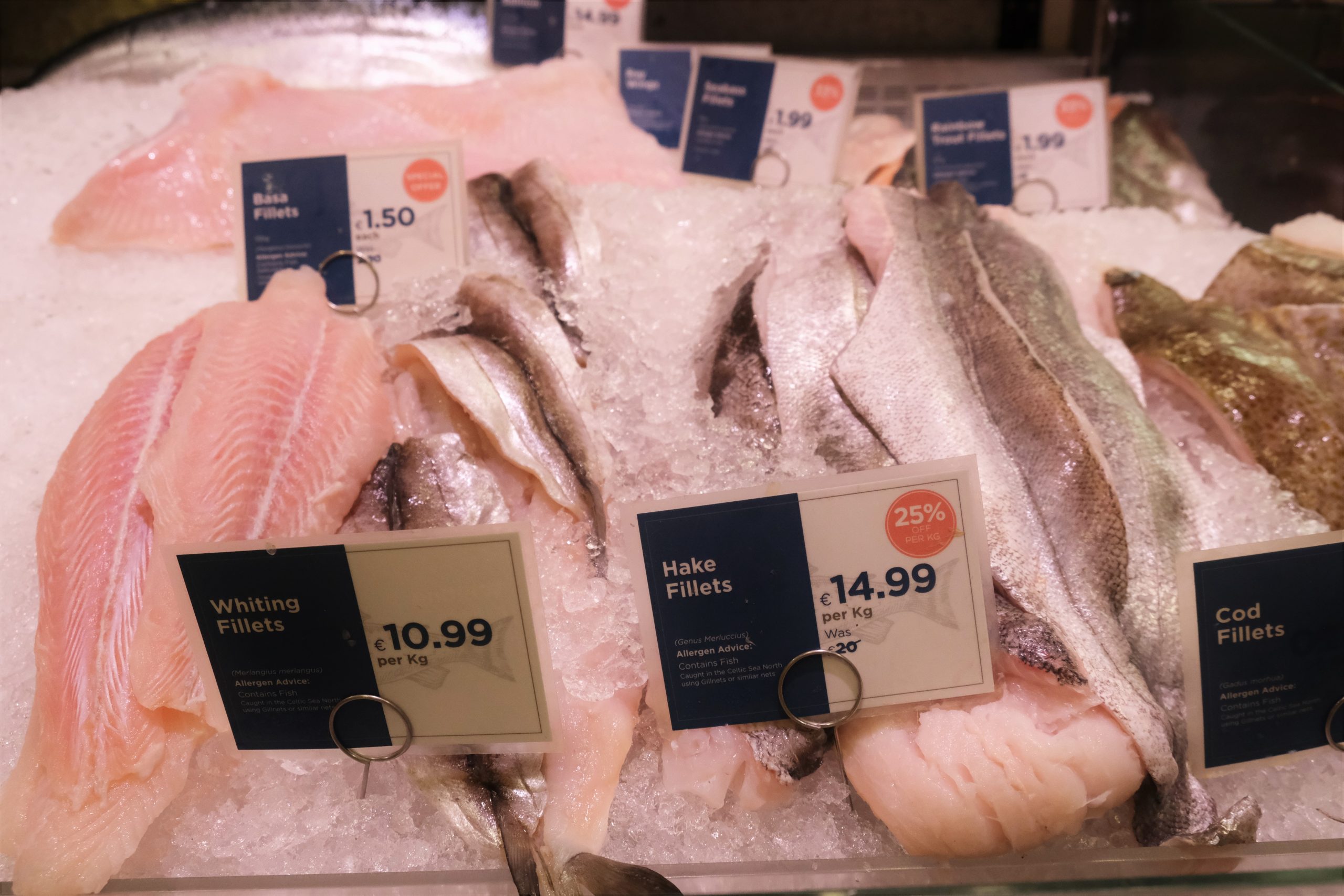In recent years, the environmental impacts of beef farming have been the main focus of mainstream media, however there is a lot to say about our consumption of seafood and the detrimental impacts of the fishing industry.
The term ghost fishing refers to abandoned, lost, or discarded fishing gear (ALDFG), also known as “ghost gear”, which continues to catch and kill sea creatures when left in the ocean. This causes a considerable environmental impact. It is estimated that over 640,000 tonnes is abandoned at sea each year, which is roughly 10% of all marine debris.
Whilst ghost fishing does harm to our oceans, Dr. Cordula Scherer, a researcher at the Trinity Centre for Environmental Humanities, has shown that there are sustainable ways to consume seafood in Ireland.
“The damage that we do, we don’t even know the half of it,” Dr. Scherer says. As of today, it is believed that ghost gear kills up to 136,000 sea mammals a year, and even more marine organisms like fish and birds.
Marine life struggles with the large amounts of plastic waste that pollute their waters; animals often eat the plastic, causing toxicity, difficulty breathing, and death. Additionally, ghost gear that accumulates on the seafloor damages coral sea tissue and causes mass death of coral, leading to the destruction of coral reefs, which provide habitats for nearly 25% of all sea life.
The destruction that this fishing equipment causes is not just a once-off occurrence. When a fishing net is abandoned or lost in the ocean, it may trap large schools of fish or marine animals. The weight of the catch causes the net to sink, which results in the net trapping more creatures at different sea depths. The trapped animals die and deteriorate, but the nets, made of the synthetic polymer nylon, do not degrade. Instead, without the weight of their catch, they rise again, repeating the cycle of trapping animals and killing them. “This cycle can continue for ten to twenty years,” Dr. Scherer stated. “Even if we started sustainably fishing now, the ghost nets would still do harm in the ocean. We need to make huge efforts to take them out.”
The damage ghost gear does is immeasurable and long-lasting, but the solution does not involve cutting seafood from your diet. “It’s not right to tell people that they cannot eat seafood,” Dr. Scherer asserted. “Do you really want to put 1.6 billion people into jeopardy and into future food insecurity just because someone tells them to stop fishing?” Whilst seafood is not inherently sustainable, it can be the most environmentally friendly option when done right.
Aquaculture is the breeding, rearing, and harvesting of fish and other organisms in all types of water environments. Whereas some fishing methods can do great damage to the environment, sustainable aquaculture introduces more biodiversity, creating an ecosystem within the farm.
“For example, we have algae growing along the ropes of the cages. This algae produces organic matter for filter feeders like mussels to be integrated in the system. These mussels are then fed to the fish, and the fish waste provides nutrients for the algae.” This cycle, with multiple species in a habitat, mimics an ecosystem in nature, making the aquaculture more sustainable and environmentally friendly than other methods of fish farming.
In Ireland today, the majority of our seafood consumption is salmon and cod, foods which take large amounts of time and energy to catch. “To catch these fish requires a lot of fuel consumption,” Dr. Scherer explained. Therefore, our overfishing habits mean that eating salmon and cod is not a favourable option.
However, unlike fish, shellfish do not require a lot of energy to grow and harvest. “They are filter feeders, so they don’t need extra attention.” Filter feeders are animals which filter small particles in the water, thereby cleaning it. They also act as carbon sinks: carbon from the ocean gets trapped in the shells of oysters and mussels, making them a far more sustainable source of protein than beef or pork, which release carbon into the atmosphere.
While both offshore fishing and shellfish cultivation use nylon ropes, the ropes are not lost and abandoned at sea and are often reused, since mussels are grown on the coast. “Oysters and mussels are superfoods,” Dr. Scherer stated. “You can’t be more sustainable than that.”
Eating mussels and oysters is the first step in the right direction to seafood sustainability, but it is important to eat a varied ocean diet. Herring and hake are more sustainable alternatives to salmon and cod, as they require less fuel to catch, and cause minimal damage to the seabed. Additionally, foods like seaweed and algae are nutritional organisms which absorb carbon, making them great food options for environmentally friendly eating. This isn’t an exhaustive list; there are an abundance of sustainable foods in the ocean to try. “In Ireland, we are incredibly lucky to have so many different types of fish and seafood in the ocean,” Dr. Scherer asserted. “We just need to eat them sustainably!”
To encourage an increase in sustainable seafood consumption, Dr. Scherer works with seafood chef Niall Sabongi to recreate traditional Irish recipes in a new way, allowing them to work for a modern taste. This project, called Food Smart Dublin, is hosted by the Trinity Centre for Environmental Humanities and is funded by the Irish Research Council under COALESCE. They have some recipes on their website to try, as well as some publications on seafood, sustainability, and the connections both have to Irish Heritage.
Though our oceans continue to be haunted by ghost fishing, Dr. Scherer’s research highlights that there are still ethical ways to consume seafood.






